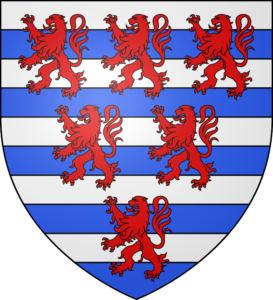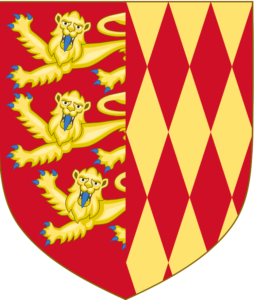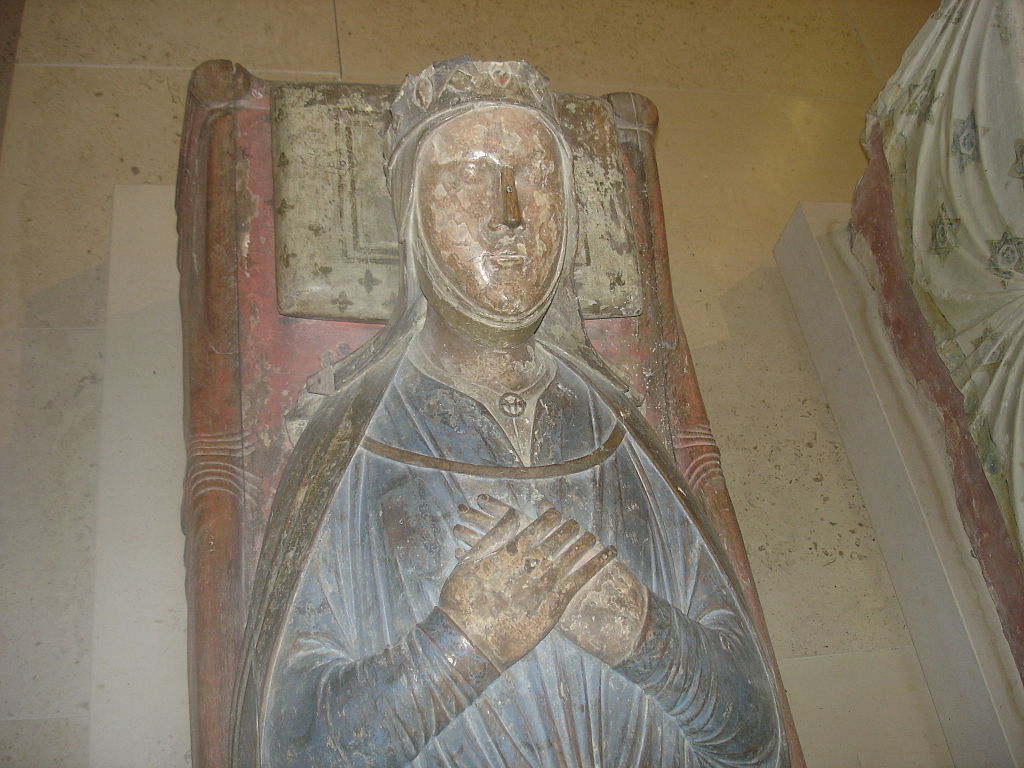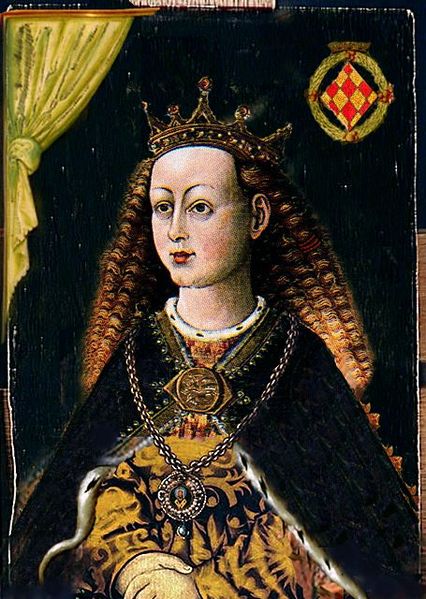Isabella of Angoulême, second wife of King John of England, died on the 4th of June 1246 at Fontevraud Abbey, where she was buried in the abbey’s churchyard, as if seeking atonement for her misdeeds. Years after her death, her eldest son with John, King Henry III of England, arrived at Fontevraud to pay respects to his deceased ancestors. Henry immediately ordered to have his mother reburied next to his grandparents – King Henry II and Eleanor of Aquitaine, having also paid for a wooden effigy of Isabella, where she was dressed and crowned as a queen, not a nun.
Born sometime between 1186 and 1188, Isabella had a tumultuous, yet interesting life, rich for events and troubles. From her mother, Alice of Courtenay, she inherited her legendary beauty and a great deal of royal blood, for Alice’s paternal grandparents were King Louis VI of France and Adélaide de Maurienne, a member of the House of Savoy. Being Alice’s only one daughter from her marriage to Aymer Taillefer, Count of Angoulême, Isabella inherited the lands of Angoulême, becoming Countess of Angouleme in her own right after her father’s passing in 1202.
Initially, Isabella was betrothed to her neighbor – Hugh IX, ‘Le Brun’, Count of Lusignan. Given Isabella’s age, the marriage could not proceed until the girl would reach marriageable age. Nevertheless, the ambitious Count Aymer seized the opportunity to give his only child the highest station possible for a woman – he gave her hand in marriage to King John of England, despite their significant age difference. Upon seeing Isabella first, John, who was a free man in 1200, was so obsessed with her that he craved to marry only her. Shortly after John’s accession to the English throne in 1199, he had his first marriage to Isabella, Countess of Gloucester, annulled on the grounds of consanguity. King John married the lovely girl on the 24th of August 1200 in Angoulême; the union was not consummated at first due to her youth.
An incensed Hugh of Lusignan, who had lost his bride, formed an alliance against King John with King Philippe II of France. John obtained control of Isabelle’s ancestral lands, but at the expense of his own holdings on the continent, most of which were confiscated by Philippe of France in retaliation. As a result, war broke out between King John and King Philippe, but John lacked his late brother King Richard’s great military prowess while also lacking Philippe’s slyness and strategical thinking ability. Nonetheless, Isabella was crowned as Queen of England in the same year in October in a sumptuous ceremony at Westminster Abbey in London.
After the spouses came to England, John and his bride were living separate lives for a few years, again because of Isabella’s tender age. While his generals bravely fought against the French troops, King John continued being profoundly infatuated with his wife, who was growing into a spectacular beauty, who is sometimes called the Helen of the Middle Ages by historians.
Much younger than John, Isabella had blue eyes and long, glossy, blonde hair, her body well-curved and magnificent, which must have attracted John sexually a lot. However, the rumors that Isabella bewitched John so much that he neglected state affairs and slept with her night after night, waking up at noon – this was only malicious gossip against the royal couple. During John’s reign, the Angevin Empire was being gradually dismantled by the crafty French ruler, so Isabella and John were together blamed for the losses of territories on the continent and for all wrongs in England.
In 6 years after the wedding, Isabella birthed John’s first son – the future King Henry III of England. He was followed by another boy in 1209 – Richard, Earl of Cornwall. Later, Isabella had three daughters – Joan (1210), Isabella (1214), and, finally, Eleanor (1215). According to many sources, John and Isabella both possessed a fiery, volatile temper. Queen Isabella was still short of 30 when King John died in October 1216 of dysentery, while the baronial unrest ravaged the country. Her son, Henry, was only 9 upon his accession, and his regent was William Marshal, 1st Earl of Pembroke, according to John’s will. Amusingly, Isabella was barely mentioned in her first husband’s will, although she received some lands as Queen Dowager of England.

Having never had any power as John’s consort, Isabella had a bleak future as Queen Mother in England, where many remained hostile to her. However, Isabella did one very good thing for Henry: she quickly organized his coronation after John’s death at Gloucester, and although the royal crown and all of the late monarch’s treasures had been lost in the Wash, she provided her son with her own golden circlet to be used in lieu of a crown during the ceremony. Soon after the coronation, Isabella left Henry in the care of his competent regent and sailed home. The official reason of her departure was the necessity to deliver her daughter, Joan, to her betrothed, Hugh of Lusignan, Count of La Marche (the son of the man to whom Isabella was originally betrothed).
In 1220, Isabella’s far-famed beauty pushed Hugh of Lusignan to perpetrate the deed that astounded the whole of England and France. Smitten with the mother of his too young fiancée, Hugh X of Lusignan, Count of La Marche, married Isabella in the spring of 1220. To justify her actions, Isabella claimed that she had taken her daughter’s place to rescue the little girl from the dangers of early marital life and childbearing, but it is unlikely to be entirely true. Isabella was still young, lovely, and full of life, and she was not inclined to spend the rest of her life as a widow. As she remarried without the consent of the Royal Council in England, the nobles confiscated her dower lands and ceased the regular payment of her pension from the state treasury.
Isabella wrote to her son, King Henry III, in England:
“God knows that we did this for your benefit rather than our own”.

Isabella and Hugh threatened to keep Joan, for whom they found a prestigious marriage to King Alexander II of Scotland, in France. The English Council consented to a compromise: Isabella was granted the stannaries in Devon and the revenue of Aylesbury for a period of 4 years. She possessed an excellent health that allowed her to give birth to nine more children with Hugh – 5 boys and 4 girls. For the first time in her life, Isabella must have felt that power belonged to her as Countess of Angoulême during her second marriage to Hugh. For about twenty years, the couple were the most powerful lords in the south-west of France, enjoying peace and calm.
Everything was bright in the marital life of Isabella and Hugh until King Louis IX of France interfered into their universe. Louis IX resolved to appoint a new overlord of the region – his brother, Alphonse, Count of Poitiers. In 1241, the French monarch summoned the spouses to Paris to make an act of homage and to swear fealty to Alphonse. Being Queen Dowager of England, Isabella expected to be treated as an equal by Louis’s wife, Queen Margaret, and Queen Dowager Blanche. However, the two French queens openly snubbed Isabella by simply not paying her any attention for several days after her arrival at court and by treating her almost like a servant. Having shown up on the Christmas festivities in 1241, Isabella and Hugh then dramatically departed.
Both disgruntled, Isabella and Hugh conspired with other displeased nobles, including her son-in-law Raymond VII of Toulouse. They planned to create an English-backed confederacy that would united the provinces of the south and west against the mighty French monarch. Isabella encouraged her son, Henry III of England, to invade Normandy in 1230, but the rebellion swiftly collapsed, and she failed to provide the support she had promised to her son. Hugh made peace with Louis in 1244. Thus, Isabella sought a way to safeguard her many offspring’s inheritance and to ensure their good future, so she retired to Fontevraud Abbey. Gossip pursued Isabella during her whole life: it was said that she had become a nun to avoid justice for her poisoning attempt on the life of King Louis IX, but none of these accusations can be proved.

Most definitely, Isabella was worried about her nine children with Hugh, who remained in Angoulême at the time. She wrote to King Louis, imploring him to allow her large progeny to inherit her French property. In 1246, Isabella died at the abbey, and I think that even the fact of her burial in the abbey’s courtyard cannot prove that she had actually committed such crimes as her supposed attempt on the life of King Louis IX of France. Despite all her pleas to the Capetian ruler, after her death Isabella’s offspring with Hugh were unlikely to have a prosperous life in France, so they sailed to England, where their half-brother Henry welcomed them in a cordial way. Hugh of Lusignan outlived his wife only for 3 years and passed away in Angoulême.
It is extraordinarily surprising that all of Isabella’s children from her both marriage survived into adulthood, especially given a lack of hygiene and proper sanitation in the Middle Ages.
All images are in the public domain.
Text © 2020 Olivia Longueville







Isabelle is in my family tree…King John is my 23 ‘X Great, great Grandfather…Quite remarkable as I live in Australia…..
Good to know!
I love this article!! Isabella is one of my favorite medieval queens. Her portrait is listed as by an unknown artist, do you happen to remember where you got the picture itself from?
Hello! Thank you for your comment, and I’m sorry for the belated response. I’ve been going through a highly stressful year of my life following my father’s death, and so many things, including my online activities, have literally stopped for me.
Isabella is a very interesting person! I agree with you. I will have to check where I got her picture, but I suppose that this portrait must have been created not in her lifetime, a few centuries later perhaps.